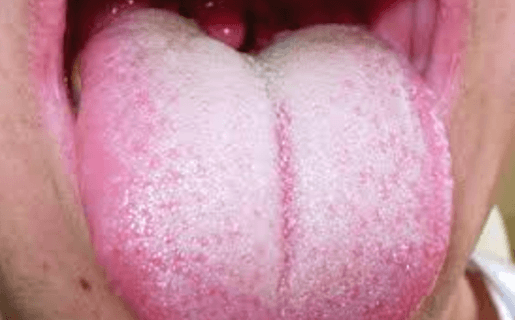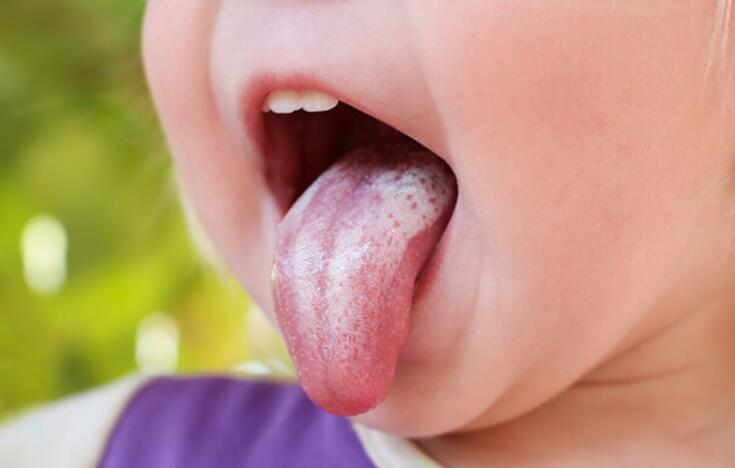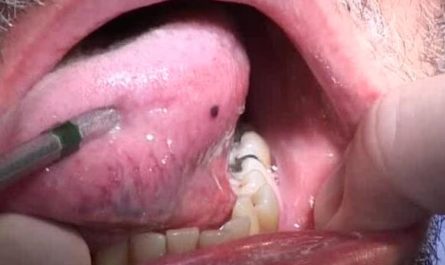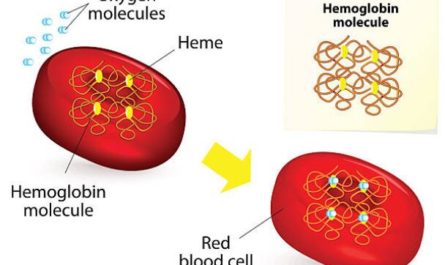White spots on the tongue can be bothersome and concerning. They can usually appear as white patches, bumps, or dots. The dots are usually small and look like milk curds strewn across the tongue’s surface.
Larger spots might be clustered together, resulting in a patchy covering of white film that has difficulty rubbing off quickly with a towel. Some spots may be yellowish or grayish in hue rather than white. In some cases, they can cause stinging pain when eating spicy foods or consuming certain acidic drinks such as coffee or juice.
These patches are usually harmless but can cause discomfort and pain and affect eating habits. Several common causes of white spots on the tongue include oral thrush, canker sores, geographic tongue, etc. This article will discuss 12 common causes of white spots on the tongue with treatment.

12 Common Causes of White Spots on Tongue
There are several common causes of white spots on the tongue. Knowing the cause of your white spots can help you determine the best course of treatment. Here are some of the most common causes of white spots on the tongue:
1. Oral Thrush
Oral thrush is a common fungal infection caused by the overgrowth of Candida fungus in the mouth. It can cause white patches on the tongue or other mouth parts, such as gums and inner cheeks.
These patches may appear creamy white and have a cottage cheese-like appearance. Oral thrush usually affects people with weakened immune systems, infants, elderly individuals, and those taking antibiotics or steroid medications.
Other risk factors for oral thrush include having diabetes, wearing dentures that don’t fit properly, smoking cigarettes, and using certain inhalers. If left untreated, oral thrush can spread to other parts of your body, like the throat, esophagus, or lungs.
2. Canker Sores
The painful white bumps on the tip or side of your tongue or lip could be mouth ulcers, also known as canker sores. These small white ulcers can recur every few months and cause discomfort while eating or talking. They may also appear on the roof of your mouth, gums, or under your tongue.
According to Dr. Alfred Wyatt from the Medical College of Georgia School of Dentistry, canker sores cause white spots on the tongue and can be very discomforting.
The causes of canker sores can be various, including stress, injury from ill-fitting dentures, or certain vitamins or minerals deficiencies.
3. Dry Mouth
Dry mouth, also known as xerostomia, can cause white spots on the tongue. This is because saliva helps wash away bacteria in the mouth.
Several factors can cause dry mouth, such as certain medications or diseases like Sjögren’s syndrome. A dry mouth allows for bacterial growth, leading to inflammation, pain, and chronic conditions if not treated promptly.
4. Lichen Planus
Lichen planus is a chronic inflammatory condition affecting the skin, nails, hair, and mucous membranes. The oral variant can appear as white, lacy patches, red, swollen tissues, or open sores.
The lesions can appear anywhere in the oral cavity, including the buccal mucosa, lips, gums, the floor of the mouth, and the palate.
The causes of oral lichen planus are not fully understood, but it is believed to be due to an autoimmune reaction. Risk factors include autoimmune disorders, oral infection, and certain medications.
5. Geographic Tongue
Geographic tongue is a condition where spots or patches appear on the top and sides of the tongue. The patches result from a lack of papillae in the affected area. The cause of geographic tongue is unknown.
Geographic tongue causes island-shaped lesions that give your tongue a map-like appearance. The lesions can appear on the upper surface and sides of the tongue.
6. Oral Cancers
White patches on the tongue can be a symptom of oral cancer. Oral cancer usually develops in the squamous cells on the tongue’s surface, leading to tumors or lesions.
According to the American Cancer Society, more than 54,000 new oral cancer cases are diagnosed annually in the United States.
The most noticeable symptoms are red or white patches on the tongue, pain, and a sore that does not heal. It is essential to see a healthcare provider if you experience any symptoms of oral cancer.
7. Leukoplakia
Leukoplakia is a condition where one or more white patches or spots form inside the mouth, which can eventually develop into oral cancer. Symptoms of leukoplakia include white patches on the surface of the tongue, underneath the tongue, or on the insides of the cheeks.
Treatment for hairy leukoplakia may not be necessary as the condition often causes no symptoms and isn’t likely to lead to mouth cancer.
8. Poor Oral Hygiene
Poor oral hygiene can lead to white spots on the tongue due to a buildup of bacteria, debris, and food particles.
When plaque accumulates in the mouth, especially on the tongue’s surface, it can cause white or yellowish discoloration and bad breath.
In many cases, regular brushing and flossing, along with good oral hygiene practices like using mouthwash or scraping your tongue, will help prevent these spots from forming. However, persistent white patches may indicate an underlying condition that requires medical attention.
9. Allergic Reaction
An allergic reaction occurs when the immune system overreacts to certain substances, called allergens, resulting in inflammation and irritation throughout the body.
Allergies can cause white spots on the tongue, among other symptoms. Allergic reactions can range from mild to severe, and treatment depends on the severity of the reaction.
10. Dehydration
Dehydration occurs when the body loses more fluids than it takes in, leading to a lack of moisture in the mouth. When the mouth becomes dry, it can cause the tongue to appear white and rough.
Several studies have linked dehydration to oral health problems, including dry mouth, tooth decay, and gum disease. Dehydration can also cause bad breath, difficulty speaking, and decreased saliva production.
11. Lie bumps (transient lingual papillitis)
If you have ever noticed raised white spots or bumps on the front of your tongue, you might be experiencing swelling of your tongue’s taste buds, commonly known as “lie bumps.” These small, whitish dots on the tongue can result from various conditions in the mouth, including inflamed papillae.
According to dermatologist Dr. Dyall-Smith, lie bumps, or transient lingual papillitis, can occur due to gastrointestinal issues, stress, or hormonal fluctuations.
People with eczema, allergies, or asthma may experience these bumps more frequently than others. The white tongue spots can sometimes last several days and cause itching or a burning sensation.
12. Injury
When you accidentally bite the tip or side of your tongue, you may notice a blister filled with fluid that appears either clear or white. Such tongue injuries cause sharp pain and make your tongue highly sensitive to certain foods and heat.
According to Dr. Sumana Jothi on MedlinePlus, mouth sores resulting from tongue injuries are not always due to tongue biting. Improperly fitting dentures or a broken tooth may also cause them. In addition to fluid-filled blisters, biting the side of your tongue may also result in blood blisters.

12 Best Home Remedies for White Spots on Tongue
1. Oil Pulling with Coconut Oil
Oil pulling with coconut oil is an age-old remedy that has gained popularity for its numerous oral health benefits. Coconut oil contains lauric acid, a medium-chain fatty acid with potent antimicrobial properties.
When swished around in the mouth, it helps combat harmful bacteria and fungi, including those responsible for white spots on the tongue.
- Take a tablespoon of organic virgin coconut oil.
- Put the oil in your mouth, and swish it around gently for 15-20 minutes.
- Be careful not to gargle or swallow the oil, as it will contain harmful microorganisms.
- After 15-20 minutes, spit the oil into a trash can. Do not spit it into the sink; coconut oil can solidify and clog the drains.
- Rinse your mouth with warm water thoroughly.
2. Turmeric and Honey Paste
Turmeric is known for its powerful anti-inflammatory and antiseptic properties, which can help reduce inflammation and fight off infections in the mouth. Honey, on the other hand, has natural healing properties, making this paste an excellent remedy for white spots on the tongue.
- Mix a teaspoon of turmeric powder with a tablespoon of raw, organic honey to form a paste.
- Apply the paste directly to the white spots on your tongue.
- Allow it to sit for 10-15 minutes.
- Rinse your mouth with water and spit out the mixture.
3. Aloe Vera Gel
Aloe vera gel is widely known for its soothing and healing properties. It contains vitamins, minerals, and enzymes that can aid in reducing inflammation and promoting the healing of white spots on the tongue.
- Cut a fresh aloe vera leaf and extract the gel from it.
- Apply the gel directly to the affected areas on your tongue.
- Let it sit for as long as possible before swallowing or rinsing your mouth.
4. Saltwater Gargle
Gargling with warm salt water is a simple and effective remedy to reduce inflammation and combat bacteria in the mouth. Saltwater creates an osmotic effect that draws out excess fluid from the tissues and helps soothe the tongue.
- Dissolve half a teaspoon of salt in a cup of warm water.
- Gargle with the solution for 30 seconds, ensuring it reaches all parts of your mouth.
- Spit out the water and avoid swallowing it.
- Repeat this process twice daily for best results.
5. Baking Soda Rinse
Baking soda, also known as sodium bicarbonate, has alkaline properties, creating an unfavorable environment for bacteria and fungi to thrive. It helps neutralize acidity in the mouth, reducing the risk of infection.
- Mix a teaspoon of baking soda in a cup of warm water.
- Stir well until the baking soda is completely dissolved.
- Rinse your mouth with the solution, swishing it for 30 seconds before spitting it out.
- Use this remedy daily to maintain oral health.
6. Holy Basil Leaves
Holy basil, or tulsi, has been used in traditional medicine for its antimicrobial and anti-inflammatory properties. Chewing on holy basil leaves can help combat harmful microorganisms causing white spots on the tongue.
- Pluck a few fresh holy basil leaves.
- Chew the leaves thoroughly, allowing the juices to reach all parts of your mouth.
- Do this multiple times a day to alleviate white spots on your tongue.
7. Apple Cider Vinegar (ACV)
ACV contains acetic acid, which exhibits potent antimicrobial properties. It can help kill off harmful bacteria and fungi responsible for white spots on the tongue.
- Mix a tablespoon of raw, unfiltered ACV in a cup of warm water.
- Gargle with the solution for 30 seconds.
- Spit out the solution and rinse your mouth with water to get rid of the vinegar taste.
8. Tea Tree Oil
Tea tree oil is a powerful antimicrobial agent thanks to its active compound called terpinene-4-ol. It can effectively combat infections and promote healing in the mouth.
- Dilute a few drops of tea tree oil in water.
- Use the diluted solution as a mouthwash, swishing it around for 30 seconds before spitting it out.
- Avoid swallowing the solution.
9. Fennel Seeds
Chewing on fennel seeds can help freshen your breath and promote oral health. The antimicrobial properties of fennel seeds can also aid in reducing white spots on the tongue.
- Take a teaspoon of fennel seeds and chew them thoroughly.
- Make sure to crush the seeds to release their essential oils.
- Repeat this after meals or whenever needed.
10. Licorice Root
Licorice root contains glycyrrhizin, a compound known for its anti-inflammatory and antimicrobial properties. Preparing licorice tea and swishing it in your mouth can help alleviate white spots.
- Boil a teaspoon of licorice root in a cup of water for 10-15 minutes.
- Let the tea cool down and use it as a mouthwash, swishing it around for 30 seconds.
- Spit out the tea and avoid swallowing it.
11. Peppermint Oil
Peppermint oil contains menthol, which provides a cooling sensation and acts as a natural analgesic. It can help alleviate discomfort caused by white spots on the tongue.
- Dilute a few drops of peppermint oil in water.
- Use the diluted solution as a mouthwash, swishing it around for 30 seconds before spitting it out.
- Be cautious not to swallow the solution.
12. Glycerin and Vitamin E Oil Blend
Glycerin and vitamin E oil have moisturizing and healing properties that can benefit the affected tongue areas. This blend can help soothe and promote the healing of white spots.
- Mix equal parts of glycerin and vitamin E oil in a small bowl.
- Apply the blend directly to the white spots on your tongue before bedtime.
- Leave it on overnight, and rinse your mouth with water in the morning.
FAQs
1. Are white spots on the tongue contagious?
In most cases, white spots on the tongue are not contagious. However, certain conditions, such as oral thrush, can be caused by a fungal infection and may be contagious. It is recommended to avoid sharing utensils and maintain good oral hygiene.
2. Can stress cause white spots on the tongue?
While stress itself may not directly cause white spots on the tongue, it can weaken the immune system, making you more susceptible to infections and oral health issues that may contribute to the development of white spots.
3. Can smoking cause white spots on the tongue?
Smoking can irritate the tissues of the mouth and tongue, increasing the risk of developing white spots and other oral health problems. Quitting smoking is beneficial for overall oral health.
4. When should I see a doctor about white spots on my tongue?
If you have white spots on your tongue that do not go away after a week or two, or if they are accompanied by other symptoms such as pain or difficulty swallowing, you should see a doctor.
Additionally, if you have a weakened immune system or have been diagnosed with a medical condition such as HIV, you should be vigilant about monitoring your oral health.






